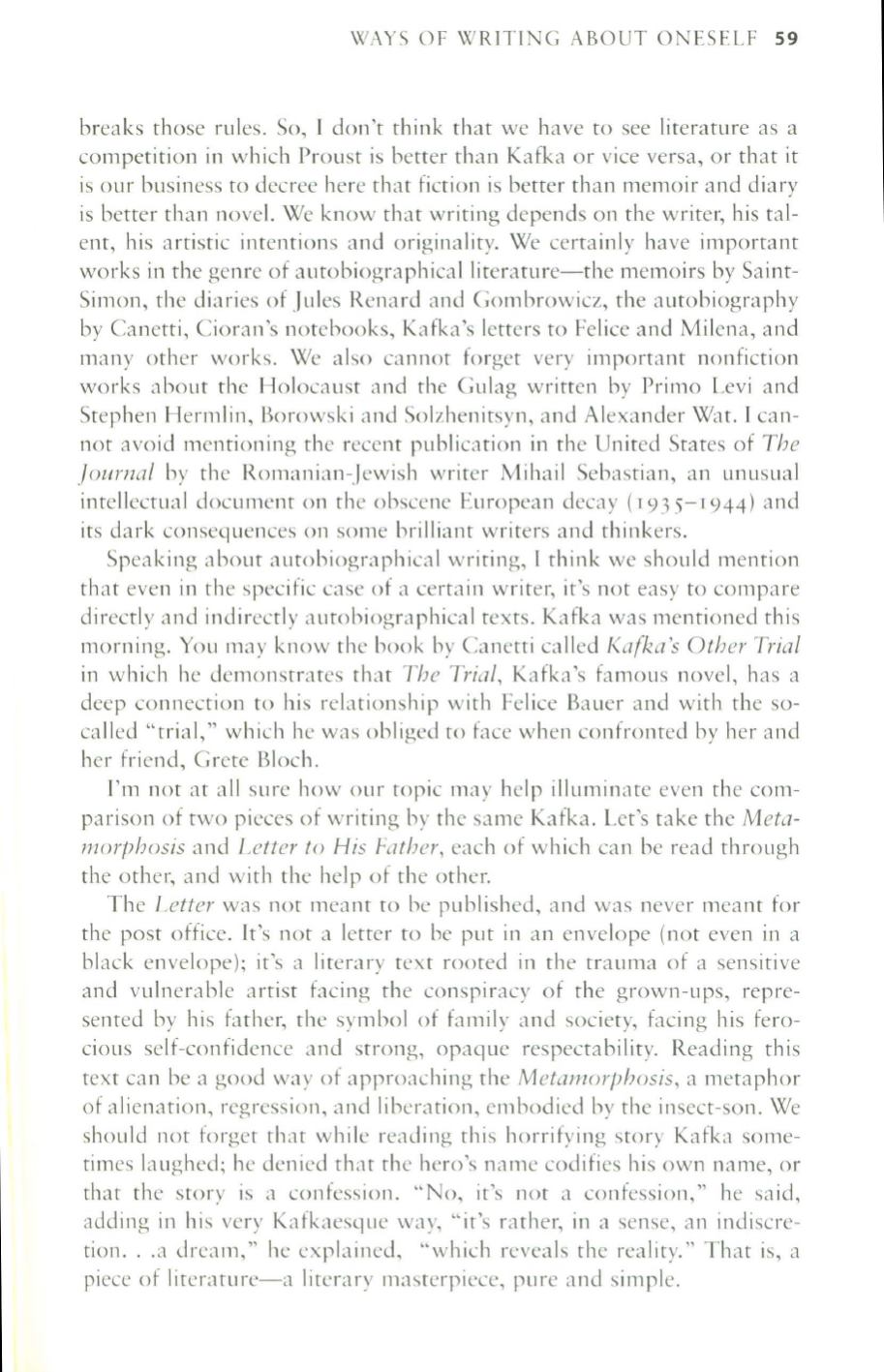
WAYS OF WRITING ABOUT ONESELF
S9
breaks those rules. So, I don't think that we have to see literature as a
competition in which Proust is better than Kafka or vice versa, or that it
is our business to decree here that fiction is better than memoir and diary
is better than novel. We know that writing depends on the writer, his tal–
ent, his artistic intentions and originality. We certainly have important
works in the genre of autobiographical literature-the memoirs by Saint–
Simon, the diaries of Jules Renard and Gombrowicz, the autobiography
by Canetti, Cioran's notebooks, Kafka's letters to Felice and Milena, and
many other works. We also cannot forget very important nonfiction
works about the Holocaust and the Gulag written by Primo Levi and
Stephen Hermlin, Borowski and Solzhenitsyn, and Alexander Wat.
I
can–
not avoid mentioning the recent publication in the United States of
The
Journal
by the Romanian-Jewish writer Mihail Sebastian, an unusual
intellectual document on the obscene European decay
(1935-1944)
and
its dark consequences on some brilliant writers and thinkers.
Speaking about autobiographical writing, I think we should mention
that even in the specific case of a certain writer, it's not easy to compare
directly and indirectly autobiographical texts. Kafka was mentioned this
morning. You may know the book by Canetti called
Kafka's Other Trial
in which he demonstrates that
The Trial,
Kafka's famous novel, has a
deep connection
to
his relationship with Felice Bauer and with the so–
called "trial," which he was obliged to face when confronted by her and
her friend, Grete Bloch.
I'm not at all sure how our topic may help illuminate even the com–
parison of two pieces of writing by the same Kafka. Let's take the
Meta–
morphosis
and
Letter to His Father,
each of which can be read through
the other, and with the help of the other.
The
Letter
was not meant to he published, and was never meant for
the post office. It's not a letter to be put in an envelope (not even in a
black envelope); it's a literary text rooted in the trauma of a sensitive
and vulnerable artist facing the conspiracy of the grown-ups, repre–
sented by his father, the symbol of family and society, facing his fero–
cious sci f-con fidence a nd strong, opaq LIe respectabil ity. Readi ng th is
text can be a good way of approaching the
Metal1lor/)hosis,
a metaphor
of alienation, regression, and liberation, embodied by the insect-son. We
should not forget that while reading this horrifying story Kafka some–
times laughed; he denied that the hero's name codifies his own name, or
that the story is a confession. "No, it's not a confession," he said,
adding in his very Kafkaesque way, "it's rather, in a sense, an indiscre–
tion ...a dream," he explained, "which reveals the reality." That is, a
piece of literature-a literary masterpiece, pure and simple.


